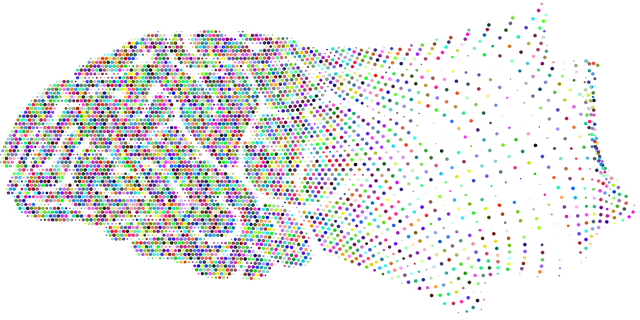Englewood Anxiety Therapy (EAT) public awareness campaigns play a vital role in shaping societal perceptions and behaviors regarding health and wellness, especially mental health. These campaigns educate communities, dispel misconceptions, and inspire action through creative strategies on accessible platforms, reaching diverse audiences. By tailoring messages to specific demographics, employing appropriate channels like social media or community events, and integrating self-care practices, EAT can effectively engage and empower individuals to prioritize their mental well-being. Successful campaigns are measured by increased help-seeking behaviors and improved access to support systems, ultimately enhancing community mental health.
Public awareness campaigns play a pivotal role in shaping societal perceptions and behaviors. This article delves into the strategic development of such initiatives, focusing on their potential to drive positive change. We explore key components, from understanding the power of public engagement to crafting compelling messages that resonate with diverse audiences, including those seeking Englewood Anxiety Therapy. Effective outreach requires selecting the right communication channels to maximize reach, all while measuring success through evaluation metrics.
- Understanding Public Awareness Campaigns: Their Role and Impact in Society
- Identifying Target Audiences for Effective Englewood Anxiety Therapy Outreach
- Crafting Compelling Messages: Strategies to Engage and Educate
- Choosing the Right Communication Channels for Maximum Reach
- Measuring Success: Evaluation Metrics for Public Awareness Campaigns
Understanding Public Awareness Campaigns: Their Role and Impact in Society

Public awareness campaigns play a pivotal role in shaping societal perceptions and behaviors. They serve as powerful tools to educate, inform, and inspire action on various issues, from health and wellness to social causes. At their core, these campaigns aim to raise understanding and dispel misconceptions, often targeting specific concerns prevalent within communities. For instance, initiatives focused on mental health, such as Englewood Anxiety Therapy, employ creative strategies to reduce the stigma associated with seeking therapy.
By integrating engaging content and accessible platforms, they reach diverse audiences, fostering open dialogue and encouraging help-seeking behaviors. Beyond this, these campaigns contribute to broader societal progress by implementing conflict resolution techniques and burnout prevention strategies, particularly in healthcare settings, where mental illness stigma reduction efforts are imperative. They catalyze positive change, ensuring that individuals feel empowered to take charge of their well-being and navigate life’s challenges effectively.
Identifying Target Audiences for Effective Englewood Anxiety Therapy Outreach

Identifying target audiences is a critical step in developing effective Englewood Anxiety Therapy outreach strategies. Understanding the demographics and psychographics of those who might benefit from anxiety therapy services is key to tailoring successful campaigns. Mental health professionals should consider age groups, genders, cultural backgrounds, and individuals with pre-existing conditions like trauma or other mental health disorders. By segmenting audiences, therapists can create tailored messages that resonate deeply with each group. For instance, young adults might be reached through social media platforms, emphasizing the importance of self-care practices in managing anxiety, while older populations may prefer community events or word-of-mouth referrals focusing on the benefits of therapy for long-term mental wellness.
Effective engagement requires knowing where and how to reach these diverse audiences. This involves assessing risk factors and utilizing appropriate channels such as local support groups, schools, workplaces, or online communities. Trauma support services can be promoted in safe spaces where individuals are more likely to open up about their struggles. Mental health professionals should also integrate self-care practices into their campaigns, encouraging community members to prioritize their mental health and seek professional help when needed. A thorough risk assessment for mental health professionals ensures that outreach efforts are both responsible and effective, fostering a supportive environment where people feel comfortable accessing Englewood Anxiety Therapy services.
Crafting Compelling Messages: Strategies to Engage and Educate

Crafting compelling messages is a crucial aspect of public awareness campaigns. To effectively engage and educate audiences about mental health topics, such as Englewood Anxiety Therapy, campaign creators must simplify complex ideas while tapping into emotions. Using relatable stories, personal anecdotes, or even humor can help break down barriers and reduce the stigma surrounding anxiety therapy. For instance, sharing success stories of individuals who have overcome anxiety through therapy can inspire hope and encourage others to seek similar support.
Incorporating strategies like Inner Strength Development and Emotional Healing Processes into campaign messaging enhances its impact. Encouraging participants to reflect on their emotional experiences through Mental Wellness Journaling Exercise Guidance allows them to better understand their own mental health landscapes. This introspective approach not only deepens engagement but also fosters a sense of self-awareness, empowering individuals to take proactive steps towards improving their overall well-being.
Choosing the Right Communication Channels for Maximum Reach

Selecting the most effective communication channels is a strategic step in designing public awareness campaigns that resonate with diverse audiences. In today’s digital age, a multi-faceted approach is key to maximizing reach and engagement. For instance, leveraging social media platforms like Facebook, Instagram, or Twitter can effectively target specific demographics while offering interactive content such as videos, infographics, and polls. These channels allow for immediate feedback, fostering a sense of community around the cause.
On top of digital platforms, incorporating traditional methods like local events, workshops, and partnerships with community organizations (such as Englewood Anxiety Therapy) underlines the campaign’s inclusivity and accessibility. This blend of Communication Strategies ensures that messages are not only seen but also understood by a wide range of people, fostering broader awareness and potentially leading to positive changes in mental health support systems, as demonstrated by successful Community Outreach Program Implementations worldwide. Moreover, integrating these diverse channels into a comprehensive risk management planning for Mental Health Professionals can further enhance the campaign’s effectiveness while safeguarding sensitive information.
Measuring Success: Evaluation Metrics for Public Awareness Campaigns

Evaluating the success of public awareness campaigns is a multifaceted process that goes beyond simple reach. While increasing visibility and engagement are initial goals, sustainable impact lies in measurable changes in behavior or attitudes. For Englewood Anxiety Therapy-led initiatives promoting mental health, key evaluation metrics include tracking the number of individuals who seek anxiety relief services, whether through therapy or self-help resources, post-campaign. This could be measured through online forms, surveys, or calls to action within campaign materials.
Furthermore, assessing changes in public perception regarding mental health issues, such as stigma associated with mindfulness meditation and confidence boosting, is crucial. This can be done through qualitative methods like focus groups or quantitative approaches like pre- and post-campaign surveys. The ultimate indicator of a successful campaign is improved access to support systems and increased help-seeking behaviors, ultimately contributing to better mental well-being within communities.
Public awareness campaigns, such as those focused on Englewood Anxiety Therapy, are powerful tools that can significantly impact society. By understanding target audiences, crafting compelling messages, and choosing the right communication channels, these initiatives can effectively reach and engage people in need. Measuring success through evaluation metrics ensures ongoing improvement and maximum impact. With strategic planning and a data-driven approach, public awareness campaigns can revolutionize mental health support, making it accessible to all.














